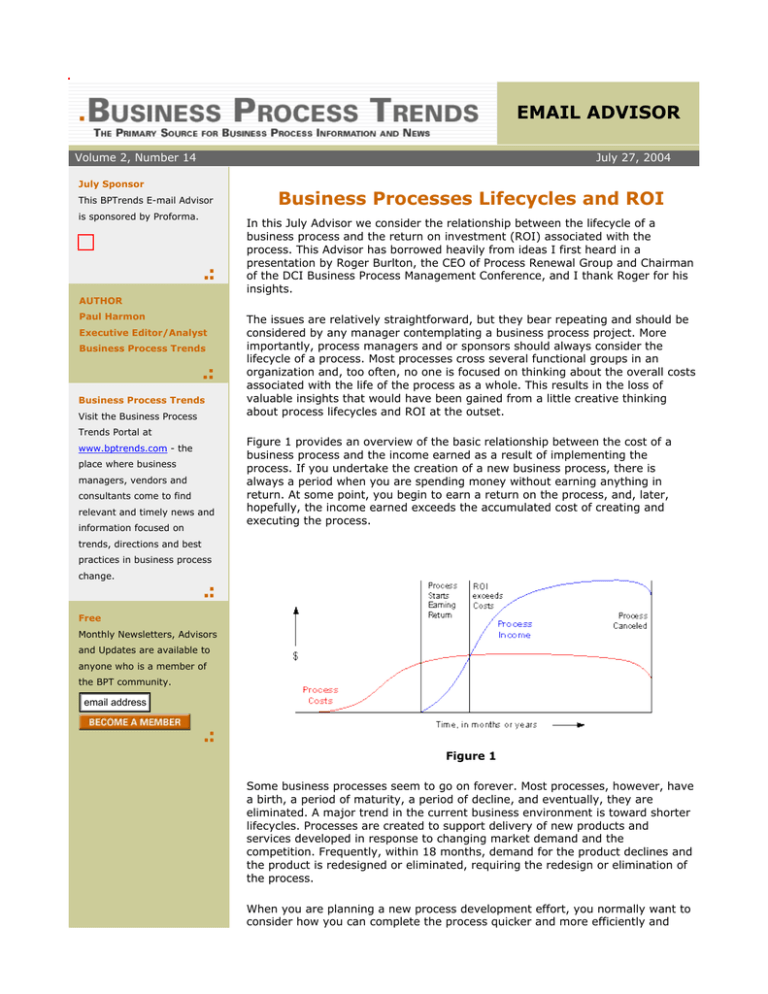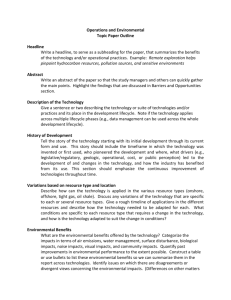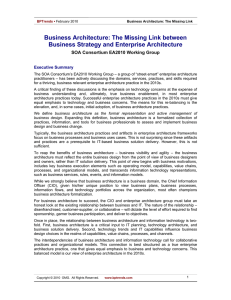EMAIL ADVISOR Business Processes Lifecycles and ROI
advertisement

EMAIL ADVISOR Volume 2, Number 14 July Sponsor This BPTrends E-mail Advisor is sponsored by Proforma. AUTHOR Paul Harmon Executive Editor/Analyst Business Process Trends Business Process Trends Visit the Business Process Trends Portal at www.bptrends.com - the place where business managers, vendors and consultants come to find relevant and timely news and information focused on July 27, 2004 Business Processes Lifecycles and ROI In this July Advisor we consider the relationship between the lifecycle of a business process and the return on investment (ROI) associated with the process. This Advisor has borrowed heavily from ideas I first heard in a presentation by Roger Burlton, the CEO of Process Renewal Group and Chairman of the DCI Business Process Management Conference, and I thank Roger for his insights. The issues are relatively straightforward, but they bear repeating and should be considered by any manager contemplating a business process project. More importantly, process managers and or sponsors should always consider the lifecycle of a process. Most processes cross several functional groups in an organization and, too often, no one is focused on thinking about the overall costs associated with the life of the process as a whole. This results in the loss of valuable insights that would have been gained from a little creative thinking about process lifecycles and ROI at the outset. Figure 1 provides an overview of the basic relationship between the cost of a business process and the income earned as a result of implementing the process. If you undertake the creation of a new business process, there is always a period when you are spending money without earning anything in return. At some point, you begin to earn a return on the process, and, later, hopefully, the income earned exceeds the accumulated cost of creating and executing the process. trends, directions and best practices in business process change. Free Monthly Newsletters, Advisors and Updates are available to anyone who is a member of the BPT community. email address Figure 1 Some business processes seem to go on forever. Most processes, however, have a birth, a period of maturity, a period of decline, and eventually, they are eliminated. A major trend in the current business environment is toward shorter lifecycles. Processes are created to support delivery of new products and services developed in response to changing market demand and the competition. Frequently, within 18 months, demand for the product declines and the product is redesigned or eliminated, requiring the redesign or elimination of the process. When you are planning a new process development effort, you normally want to consider how you can complete the process quicker and more efficiently and begin earning money earlier in the product lifecycle. Perhaps, instead of waiting until the entire process is complete, you can begin selling some modules of the new product before you have completed all of them. Perhaps one client will pay something to obtain the product or service early, in effect, paying to help with developmental testing in order to get a head start in a new market. Anything that moves the "Start," or "ROI Exceeds" lines to the left will probably improve the lifetime earnings of your process. Figure 2 Figure 3 considers two other scenarios. In tough times, everyone thinks of somehow reducing the ongoing costs of executing the process (3). In good times, everyone thinks about increasing the price of the product or service to earn a bit more on an existing process (4). Figure 3 Figure 4 shows the result of extending the life of a process. You invest a bit more later in the life of the process by changing the product a bit, by changing the process to be more responsive to customer demands, or, perhaps, by targeting an additional audience for the product. Obviously, any improvement will depend on the relationship between your process costs, the costs of changes, and the income resulting from employing the process. If you already enjoy a good margin on the sale of the product or service, and can do something modest to extend the life of the process, this can be a very effective strategy. Figure 4 As we suggested earlier, the basic relationships we just mentioned are wellunderstood by most managers. Still, too often, when designing a new business process, or considering changes in an existing process, we forget the basics. Worse, in too many cases, no one steps back and looks at the big picture and considers the entire process lifecycle. As a process manager, you ought to develop a general idea of the lifecycle of a process. How long is your company likely to use a given process, and what will likely cause the process to fall into disuse. Similarly, you ought to have a good idea of the lifetime costs of the process, and what its development and ongoing use will cost and earn for your organization. Finally, when anyone suggests a change in the process, you ought to work through the options. Too often we get trapped inside some mental box. The proposal is automation, so we only think about what would be involved in automation. Or the focus is Six Sigma, so we think about how to get the employees to perform better rather than considering the possibility of completely automating or of outsourcing the process. :: email us :: Visit BPTrends Thinking about process lifecycle issues is one of the tasks that the project manager or sponsor ought to focus on. It can often yield significant rewards. Till next time, Paul Harmon





